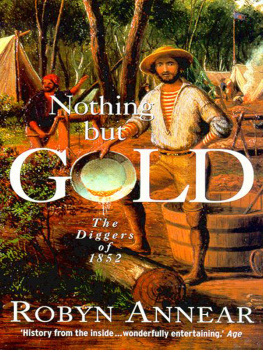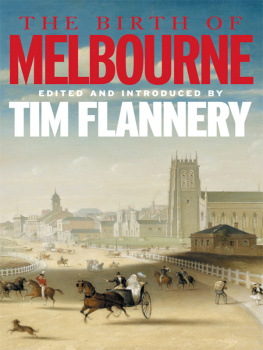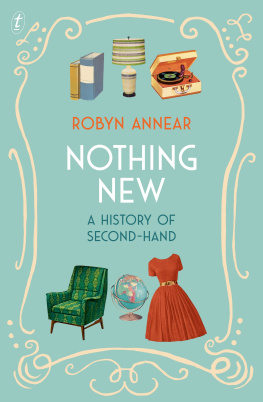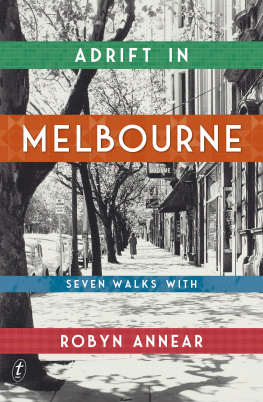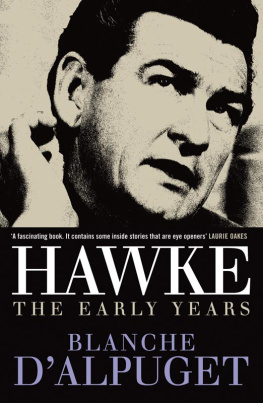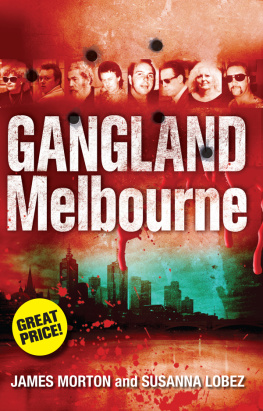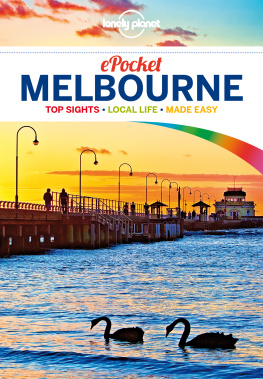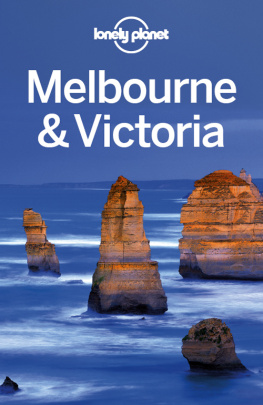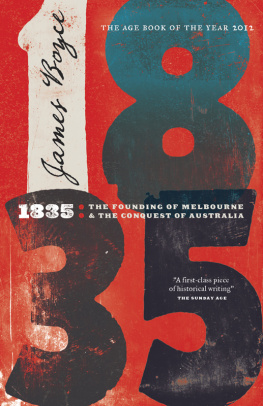More Melburnians are aware of Bearbrass today than in 1995. Theres a Bear Brass restaurant on Southbank, you can take a tour of Bearbrass, What was Melbournes original name? is a standard poser with quizmasters, and ABC local radios morning presenter sometimes gives his station call-sign as 774 Bearbrass. But Bearbrass itself is neither harder nor easier to find than it was ten years ago. No matter how the city changes in shape, form and outlook, Bearbrass dead-and-buried, trick-of-the-light Bearbrass stays the same.
Not me, though: Bearbrass (the book) changed me. It awoke me, for one thing, to the value of an index. First time round, I opposed the inclusion of an index, determined that it wasnt to be that kind of book. Well, it turns out that it is that kind of book. As the passage of time distanced me from its contents, I came to share the readers gripe. This new edition includes an index, as much for my sake as yours.
In the absence of footnotes, Ive been called on sometimes to justify my facts. How did I know (asked one reader) that Superintendent La Trobe swapped a flowered robe for something with epaulettes on the morning of the Princes Bridge opening? I had no choice then but to own up to the time machine in my shed. Secrets theres just no keeping them, is there?
INTRODUCTION
In her history of the London suburb of Kentish Town, Gillian Tindall wrote:
just because you transfer the descendants of ploughmen to paved streets or turn villages into urban areas, you do not in fact alter human beings; they will still make their villages where they can.*
When I lived there, I made Melbourne my village. Im not talking about suburban Melbourne, where rusticity can be as close as the corner shop: a few Scotch thistles, a galvanised iron fence and a flickering Peters ice cream cone can work magic on your sense of time and place. I made my village of central Melbourne and its a village that takes some finding. I think of it as Bearbrass.
* Gillian Tindall, The Fields Beneath: The history of one London village, Paladin Books, London, 1980 (new ed. Weidenfeld & Nicholson, 2002)
Bearbrass was one of the names by which Melbourne was known in its early days apparently a mis-rendering of Birrarung, meaning river of mists in the language of the Wurundjeri people. Other variations tried out by the settlers included Bareport, Bareheep, Barehurp, and Bareberp. In my imagination, Ive raised again the village (or the Township, as it was called) that was early Melbourne, whose physical traces have been almost entirely displaced and pulverised by the out-gougings and up-thrustings of the Melbourne we see today.
Let me clarify what I mean by early Melbourne. Im talking of the period from the arrival of white settlers in 1835 until 1851 when the first gold rushes shook the town. Long before 1851, of course, Melbourne had grown well beyond a township, but its era of grandeur and Marvellousness was still far in the future: the Block was a quagmire and Collins Street had no Paris end. Early Melbourne was a different place thats why I prefer to think of it as Bearbrass.
What fascinates me most is the shaping of the place, and its resistance to shaping. As soon as settlement commenced, the government, judiciary and men who called themselves masters did their best to make the place proper and meek and profitable. Their attempts and successes are well documented by historians, as are the men themselves. But the ground itself resisted tree stumps held fast where thoroughfares were intended and so, to a large extent, did common inhabitants of the town. This book is about the streetlife of Bearbrass the people on the streets, the buildings on the streets, and those unyielding streets themselves.
I subtitled this book Imagining Early Melbourne to make it clear that this is not a conventional history. Im no historian; thoroughness and authority are not qualities I can lay claim to. This book about Bearbrass, the earliest Melbourne, is sometimes inaccurate, unfactual and fanciful apocryphal, in fact. But apocrypha can also refer to something hidden, a secret, and I wanted to convey that element, too. Bearbrass is a hidden place; it relies for its existence on the imagination of the observer. It is my hope that readers of this book will carry their awareness of Bearbrass with them when they visit central Melbourne, and so rebuild the township. And just as Ive overlaid Bearbrass with my impressions and experiences of the modern city, so readers will add their own snickleways, divergences and sacred sites the wall that supported an ancient knee-trembler, the now-defunct cake shop that once sold the best Neenish tarts in town, the grate that ate your stiletto heel as you hurried to a big date and so on. Remember, they will still make their villages where they can.
This book is intended, most of all, as a counterbalance to modern Melbourne, as a way of saying: There is more to the place than carparks, concrete and cafs. And if I see just one person wearing an inexplicable smirk in Market Street or near Spencer Street station, Ill know this book has achieved its purpose Ill know that theyre imagining Bearbrass.

1. Batmans Hill
2. Mooring place of the Enterprise , August 1835
3. Yarra Falls
4. Site of Enterprise settlers first huts
CHAPTER 1
Founders and Shapers
Dreams of a noseless man
Transport yourself, in imagination or actuality, to Collins Street west of Spencer. Brave new city! Not till now well, recently did Melbournes premier street break through the barrier of Spencer Street. Now its westward extension carries Collins Street over the railyards to Docklands, mimicking the long-lost Batmans Hill in the process.
Sit yourself in one of the tram shelters at the peak of the Collins Street hump. Eastward offers a new, elevated view of the city, while Docklands takes amazing shape to the west. Hunched atop a tall plinth, riverwards, a grey-white sculpted eagle Bunjul, the ancestral creator spirit watches over traffic on Wurundjeri Way. Trains grunting underfoot make your hollow hill shudder. Inbound or out-, they pass beneath the spectacularly seasick roof of the Southern Cross (ne Spencer Street) railway station. With the new station unfinished at time of writing, it remains to be seen whether the traditional patrons country train-travellers and chain-smokers in stretch denim really will be displaced by well-heeled sophisticates, as the developers concept drawings suggest.


